10 Annual Flowers That Reseed Themselves Year After Year
- Cosmos – These daisy-like blooms come in shades of pink, white, and crimson, growing 2-4 feet tall. Cosmos tolerate poor soil conditions and drought, making them perfect for low-maintenance gardens. Their ferny foliage adds texture, while their prolific seed production ensures they’ll return year after year.
- California Poppies – With their vibrant orange cups and bluish-green foliage, California poppies bring a splash of color to any garden. They thrive in poor, well-drained soil and full sun. Once established, these drought-tolerant flowers will self-sow readily, creating drifts of color each spring.
- Bachelor’s Buttons – Also known as cornflowers, these bright blue blooms are reliable reseeders that attract pollinators. Standing 1-3 feet tall, they produce papery flowers that look beautiful in both garden beds and cut flower arrangements. Their seeds germinate easily in cool weather, ensuring future generations.
- Love-in-a-Mist – Nigella features intricate blue, pink, or white flowers surrounded by feathery foliage. After flowering, they develop distinctive seed pods useful in dried arrangements. These charming plants self-seed abundantly, popping up in unexpected places throughout your garden.
- Calendula – These sunny orange and yellow blooms provide continuous color from spring through fall. Also called pot marigolds, calendulas have edible petals and medicinal properties. Their seeds germinate readily in cool soil, making them reliable self-sowers in most garden conditions.
- Larkspur – With tall spikes of blue, pink, or white flowers, larkspur adds vertical interest to gardens. These cottage garden favorites bloom in late spring and early summer before setting copious seeds. They prefer cool weather for germination and will reliably return each year.
- Cleome – Also known as spider flowers, cleomes produce distinctive blooms with long stamens that resemble spider legs. Growing 3-5 feet tall, they make excellent background plants. Their seeds scatter readily, and new plants emerge when soil temperatures warm in spring.
- Celosia – These unique flowers come in flame-like or brain-like forms in vibrant reds, oranges, and yellows. Celosia thrives in hot, humid conditions and produces abundant seeds that readily germinate in warm soil. Their distinctive appearance adds interest to gardens year after year.
- Morning Glory – These vigorous climbers produce trumpet-shaped flowers in shades of blue, purple, pink, and white. Morning glories can produce hundreds of seeds per plant, sometimes reseeding too enthusiastically. Plant them where their climbing habit can be accommodated and enjoy their daily show of fresh blooms.
- Nasturtium – With their round leaves and bright orange, yellow, or red flowers, nasturtiums add a peppery flavor to salads while brightening gardens. These easy-growing plants produce large seeds that readily sprout in spring. They prefer poorer soils, where they’ll flower more abundantly before setting seed for next year’s display.
Understanding Self-Seeding Annuals: Nature’s Garden Gift
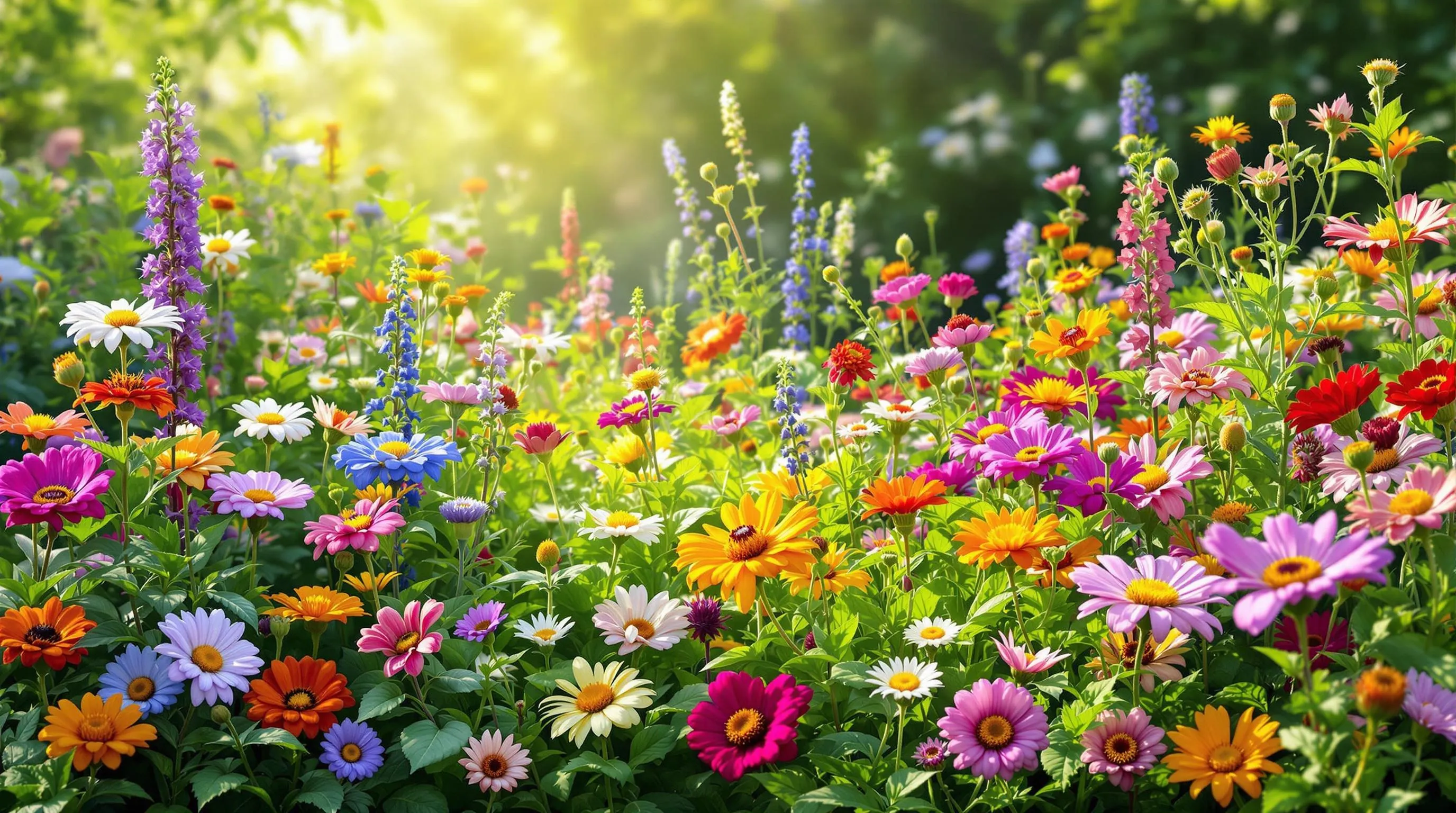
Self-seeding annuals represent one of gardening’s most delightful surprises, offering beauty that renews itself year after year with minimal intervention. These plants have perfected the art of perpetuation through abundant seed production, creating sustainable garden displays that evolve naturally over time.
How Self-Seeding Works
Self-seeding annuals operate on a simple yet effective biological principle. As these plants reach maturity, they develop seed heads filled with many viable seeds. When the seeds fully ripen, the plant disperses them through various mechanisms—some burst open explosively, others release seeds gradually as they sway in the breeze, while some drop seeds directly beneath the parent plant. These seeds then lie dormant in the soil until environmental conditions become favorable, typically in spring when soil temperatures warm and moisture levels increase. The seeds naturally stratify during winter months, breaking dormancy and preparing for germination when conditions align with their exact needs. This process creates a natural succession where seeds sprout, grow, flower, produce seeds, and die—completing their lifecycle while ensuring the next generation is already in place.
Benefits of Reseeding Annuals
Incorporating self-seeding annuals into your garden offers multiple advantages. First, you’ll save important money by not purchasing new plants or seed packets each season. These volunteer seedlings create surprising color combinations and garden designs that even experienced industry architects couldn’t plan, adding an element of serendipity to your garden. They’re remarkably low-maintenance, naturally adapting to your garden’s exact growing conditions and becoming more resilient over time. Self-seeders often emerge at optimal times for your local climate, having evolved to germinate when conditions are just right. Many reseeding varieties also excel at filling bare spots in the garden, preventing weed invasion while creating cohesive plantings. Also, these plants typically produce abundant flowers that support local pollinators, contributing to the ecological health of your garden network while providing continuous visual interest throughout growing seasons.
Calendula: The Versatile Pot Marigold
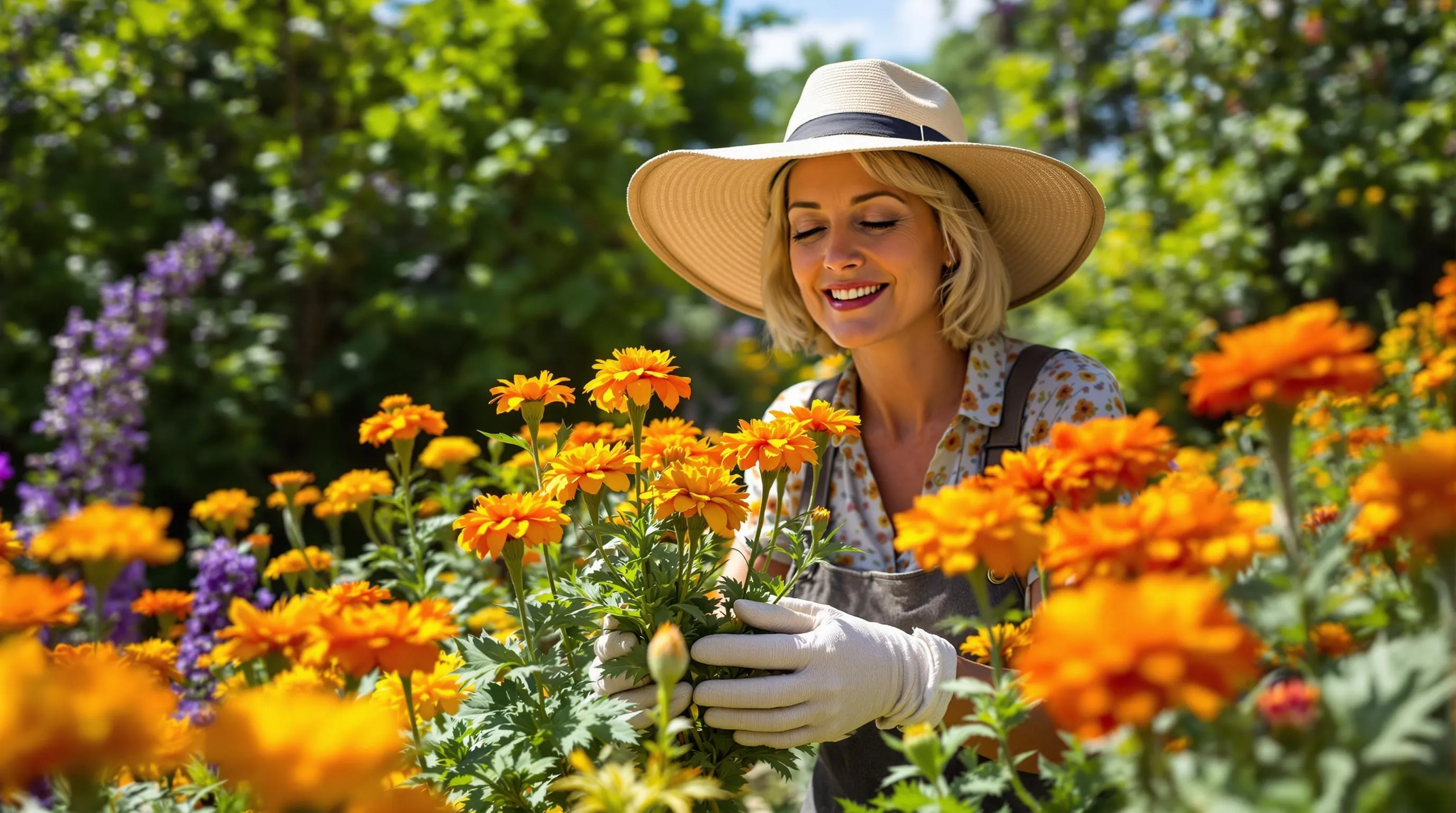
Calendula (Calendula officinalis), commonly known as pot marigold, stands out as one of the most reliable self-seeding annuals for your garden. With its cheerful orange and yellow blooms that appear from early summer until frost, this easy-to-grow flower brings continuous color while faithfully returning year after year through natural reseeding.
Growing Conditions for Optimal Reseeding
Calendula thrives in full sun to partial shade and adapts to most soil types, though it prefers well-draining, moderately fertile soil. For successful reseeding, allow some flowers to remain on the plants at the end of the season rather than deadheading all blooms. These mature seed heads will naturally drop their crescent-shaped seeds onto the soil below. Calendula germinates best when seeds have direct contact with soil, so avoid heavy mulching in areas where you want them to self-sow. In warmer climates (USDA zones 8-10), calendula often acts as a cool-season annual, reseeding in fall for winter and spring blooms, while in colder regions, seeds lie dormant through winter and sprout in spring.
Medicinal and Culinary Uses
Beyond its ornamental value, calendula offers impressive medicinal and culinary benefits. The vibrant petals contain powerful anti-inflammatory and antimicrobial compounds, making them a staple in herbal salves and skin treatments for centuries. You can harvest the flowers to create healing oils, creams, and tinctures that help soothe minor skin irritations, burns, and wounds. In the kitchen, the slightly spicy, peppery petals add both color and flavor to salads, soups, and rice dishes. Some chefs use calendula as a more affordable substitute for saffron to impart a golden hue to various recipes. Always harvest flowers in the morning after the dew has dried for the best flavor and medicinal potency.
Cosmos: Delicate Blooms With Powerful Reseeding Ability

Cosmos are among the most prolific self-seeders in the flower garden, producing hundreds of seeds per plant that readily germinate the following spring. These airy, daisy-like blooms thrive in poor soil conditions and can withstand drought, making them perfect for low-maintenance gardening. With heights ranging from 18 inches to over 4 feet, cosmos create a dramatic backdrop while reliably returning year after year through their impressive reseeding capability.
Varieties That Reseed Best
Cosmos bipinnatus varieties, particularly ‘Sensation’ and ‘Sonata,’ demonstrate exceptional reseeding abilities in most garden settings. The classic pink, white, and magenta varieties typically reseed more vigorously than newer hybrid cultivars. ‘Bright Lights’ cosmos (Cosmos sulphureus) with its vibrant orange-yellow blooms is another champion self-seeder, often appearing in unexpected garden locations the following year. For consistent reseeding success, avoid double-flowered varieties which produce fewer viable seeds and instead opt for single-flowered types that pollinators can access easily, improving seed production and increasing your chances of volunteer seedlings.
Maintenance Tips for Controlled Spread
To manage cosmos reseeding effectively, deadhead flowers regularly during mid-summer to control plant numbers, but allow some blooms to mature and set seed in late summer through fall. Shake mature seed heads over areas where you’d like cosmos to appear next season, or simply let nature disperse them. If cosmos become too enthusiastic in their spreading, remove unwanted seedlings in spring when they’re just a few inches tall. For best reseeding results, avoid applying thick mulch in areas where you want cosmos to return, as seeds need direct soil contact to germinate successfully. In colder regions (zones 3-5), lightly rake fallen seeds into soil before winter to improve germination rates when warm weather returns.
Bachelor’s Buttons: Classic Blue Beauties That Return Reliably

Bachelor’s buttons (Centaurea cyanus) rank among the most dependable self-seeding annuals for your garden. These charming flowers, also known as cornflowers, produce iconic blue blooms that reliably return year after year with minimal effort on your part. Their drought tolerance and ability to thrive in various conditions make them perfect for gardeners seeking low-maintenance beauty.
Best Soil Conditions for Natural Reseeding
Bachelor’s buttons perform best in well-drained, moderately fertile soil with a pH between 6.0 and 7.0. They actually prefer slightly poor soil conditions, as overly rich soil can reduce flowering and seed production. For optimal natural reseeding, avoid heavy mulching around mature plants in late summer and fall. This allows the seeds to make direct contact with the soil surface, improving germination rates the following spring. Bachelor’s buttons also appreciate full sun exposure, which encourages robust growth and abundant seed production. In warmer climates, providing afternoon shade can extend their blooming period and increase viable seed development.
Companion Planting Suggestions
Bachelor’s buttons make excellent companions for many garden plants. Plant them alongside cosmos, California poppies, and zinnias for a wildflower meadow effect that supports pollinators. Their blue blooms create striking contrast when paired with yellow marigolds or orange calendula. In vegetable gardens, bachelor’s buttons attract beneficial insects that help control pests on nearby crops like tomatoes and peppers. Their relatively shallow root system means they won’t compete aggressively with neighboring plants for nutrients. For a cottage garden look, combine them with other self-seeders like love-in-a-mist and larkspur for a continuous display of varied colors and textures throughout the growing season.
California Poppies: Golden Drought-Tolerant Reseeders
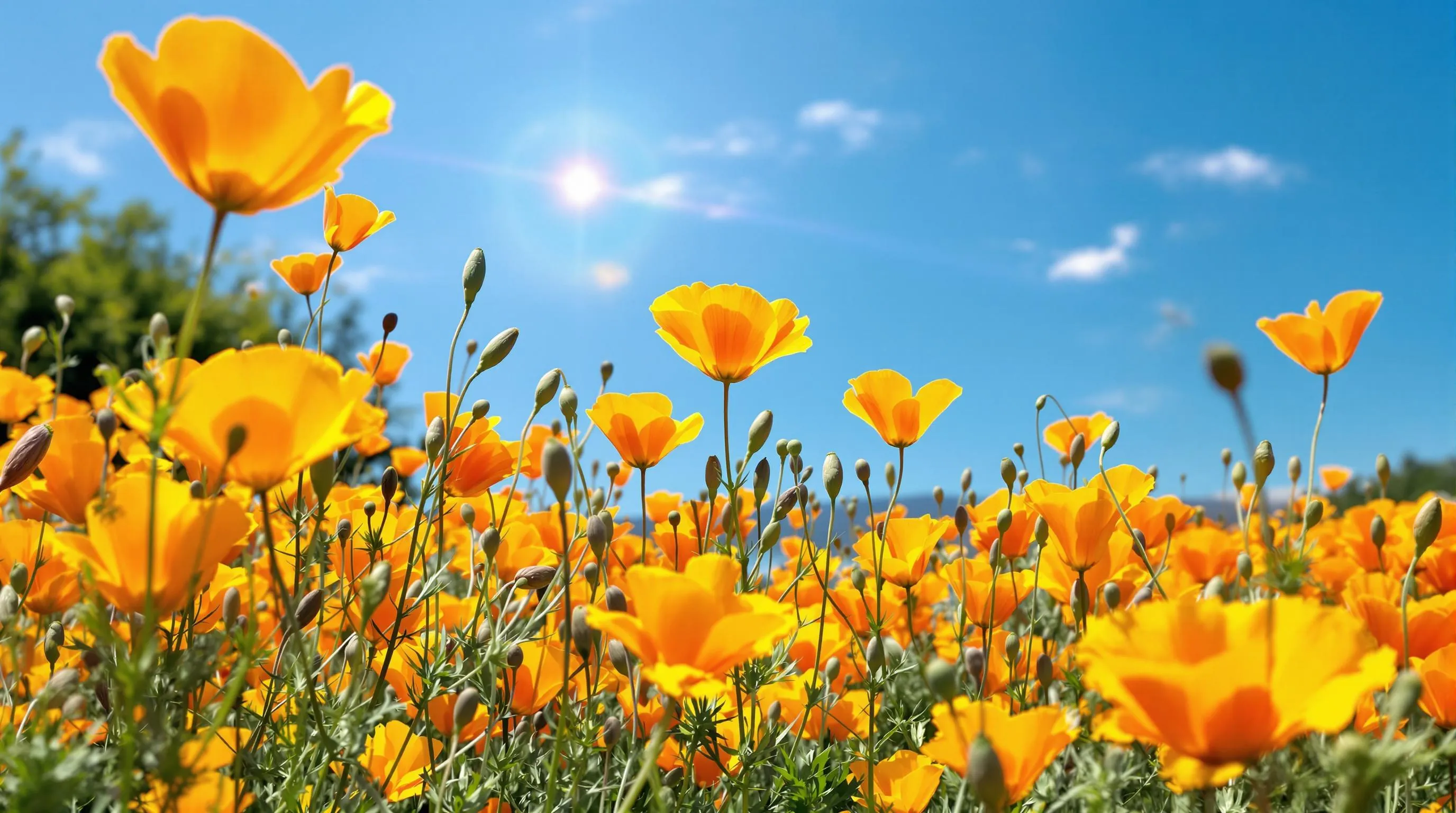
California poppies (Eschscholzia californica) are iconic wildflowers that bring vibrant orange-gold hues to gardens with minimal effort. These drought-tolerant annuals are prolific self-seeders, establishing themselves in sunny locations with well-draining soil. Their delicate cup-shaped blooms appear from spring through summer, closing at night and reopening with the morning sun. A single California poppy plant can produce hundreds of tiny black seeds that readily germinate the following spring.
Regional Adaptation Considerations
California poppies thrive best in USDA zones 6-10, perfectly adapted to Mediterranean-like climates with dry summers and mild, wet winters. In cooler regions (zones 3-5), you’ll see better reseeding success by selecting a protected, south-facing location that warms quickly in spring. These poppies prefer lean, sandy or rocky soils rather than rich garden beds—excess fertility produces lush foliage at the expense of flowers. For maximum reseeding potential in humid eastern regions, provide excellent drainage by adding sand or fine gravel to planting areas. Allow at least 10-12 inches between plants to ensure proper air circulation, reducing fungal issues in higher humidity environments.
Managing Their Enthusiastic Spread
California poppies can spread enthusiastically in ideal conditions, requiring some management to prevent them from dominating your garden. Deadhead spent blooms selectively—remove about 70% of the seed heads while leaving 30% to reseed for next year’s display. If poppies appear in unwanted areas, simply pull young seedlings when soil is moist, as their tap roots come out easily before establishing deeply. Create boundaries using hardscape elements like walkways or edging to contain their spread naturally. For a more controlled self-seeding pattern, collect mature seed pods before they burst open and scatter seeds precisely where you want next year’s plants to emerge.
Love-in-a-Mist (Nigella): Unique Flowers and Seed Pods
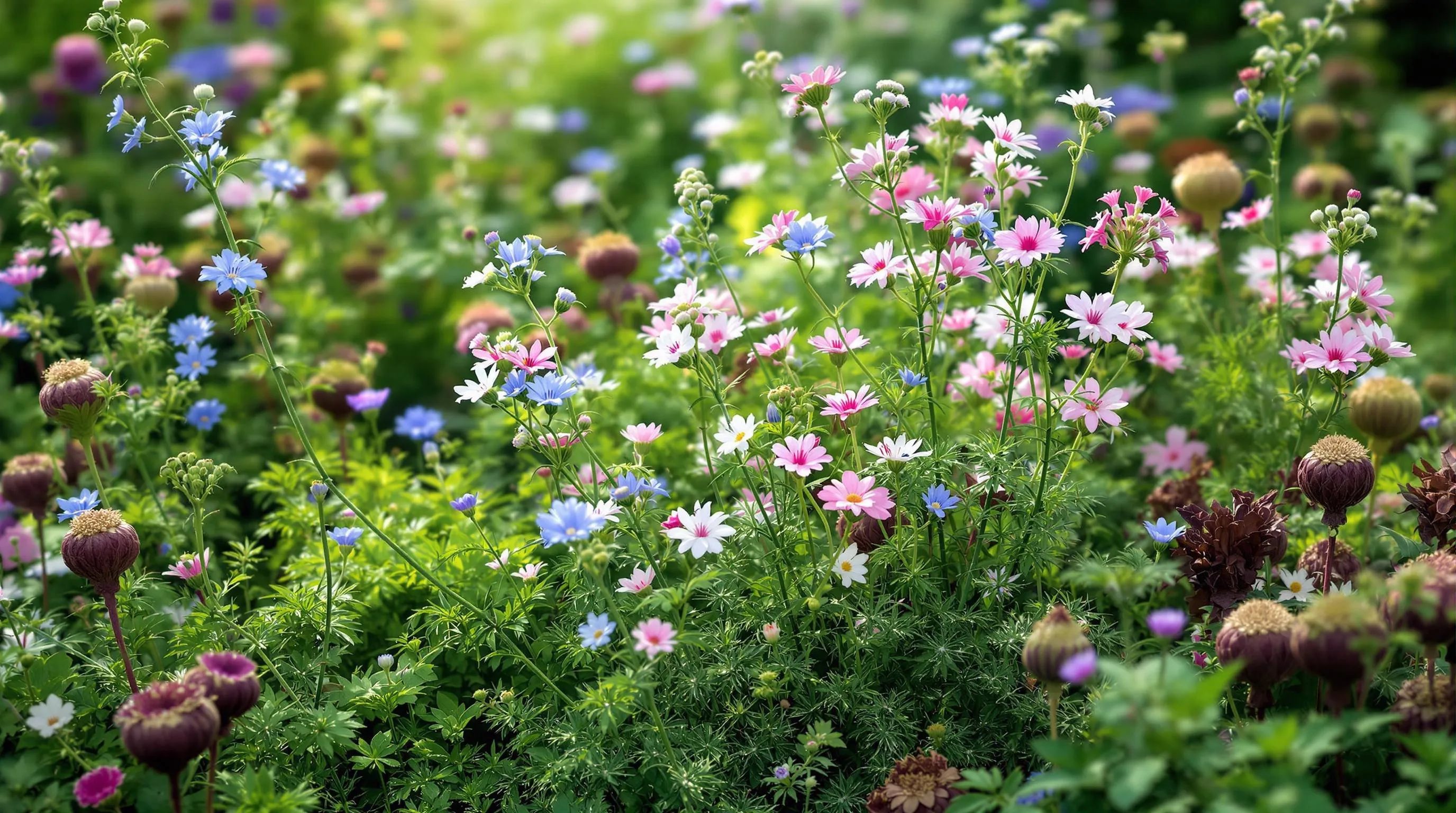
Love-in-a-Mist delivers a double dose of garden interest with its ethereal blue flowers and decorative seed pods. This easy-to-grow annual enthusiastically reseeds itself, creating delightful drifts of color year after year with minimal effort on your part.
Distinctive Characteristics
Love-in-a-Mist features delicate, star-shaped flowers in shades of blue, pink, or white that float above a cloud of feathery foliage. The blooms reach 1-2 inches across and appear from late spring through summer, creating a misty effect in the garden. After flowering, Nigella develops striking balloon-shaped seed pods with horn-like projections that add architectural interest to both the garden and dried arrangements. These distinctive pods turn from green to a burgundy-brown as they mature, remaining ornamental long after the flowers fade. The plant typically grows 15-24 inches tall and prefers full sun to light shade in average, well-drained soil.
Harvesting Seeds vs. Allowing Natural Reseeding
You can either collect Love-in-a-Mist seeds or let them self-sow naturally depending on your gardening goals. For controlled reseeding, harvest the pods when they turn tan and the small windows at the top open slightly—this indicates mature seeds inside. Dry the pods in a paper bag, then break them open to collect the tiny black seeds for storage or targeted sowing. For natural reseeding, simply leave some seed pods on the plants at the end of the season. They’ll split open when ready, dispersing seeds that will germinate the following spring. To prevent excessive self-seeding, remove about half the seed pods before they mature. Love-in-a-Mist seeds need light to germinate, so avoid heavy mulching in areas where you want volunteer seedlings to emerge.
Cleome: Dramatic Spider Flowers That Come Back Each Year
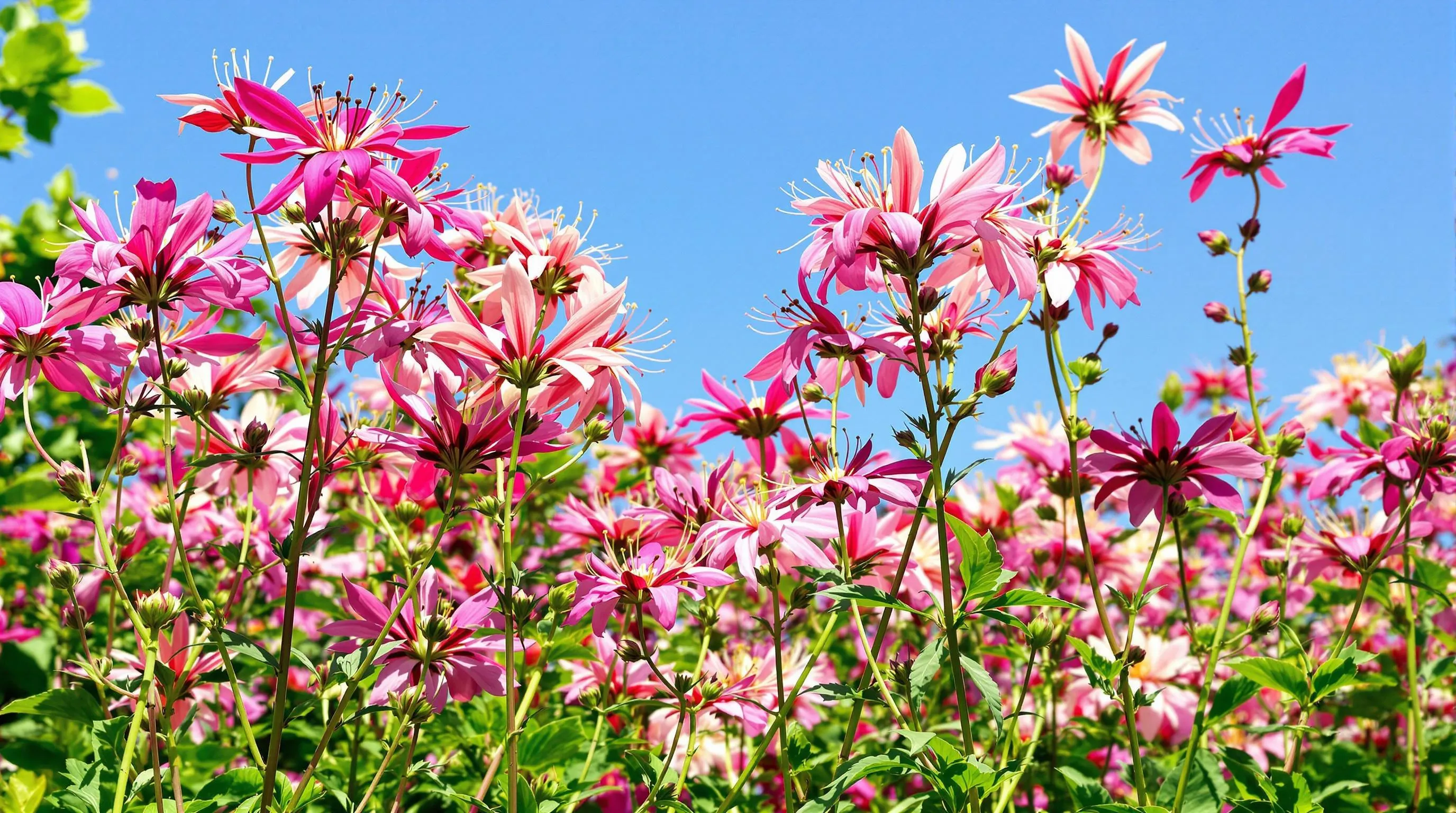
Cleome, commonly known as spider flowers, are stunning self-seeders that create vertical drama in gardens with their unique star-shaped blooms and spider-like stamens. These impressive annuals grow 3-5 feet tall and produce prolific seeds that readily germinate the following spring, establishing themselves as reliable returners year after year.
Ideal Garden Locations
Cleome thrives in full sun locations with at least 6-8 hours of direct sunlight daily. Plant these tall beauties in well-draining soil with moderate fertility—surprisingly, they’ll perform better in slightly poor soil than in overly rich conditions. Their height makes them perfect for the back of borders, along fences, or as dramatic centerpieces in island beds. Cleome’s sturdy stems rarely need staking, allowing them to stand tall through summer storms and continue their impressive display from early summer until frost. For best reseeding success, avoid areas with heavy mulch that might prevent seeds from reaching soil contact.
Controlling Their Spread
Managing cleome’s enthusiastic reseeding is straightforward with a few simple strategies. Deadhead spent blooms regularly during the growing season to prevent excessive seed drop, leaving only a few select seed heads to mature in areas where you want next year’s plants. The distinctive seed pods split open when mature, dispersing seeds several feet from the parent plant. If cleome appears where it’s unwanted, simply pull young seedlings in spring—they have shallow roots and remove easily. For a more controlled approach, collect mature seed pods before they split open and store them for targeted planting next season. Unlike some aggressive reseeders, cleome generally maintains a manageable population that won’t overwhelm your garden.
Larkspur: Cottage Garden Favorites That Self-Sow

Larkspurs (Consolida ajacis) bring cottage garden charm with their tall spikes of delicate blooms in shades of blue, pink, purple, and white. These traditional favorites readily self-sow, creating natural drifts of color year after year. Unlike their perennial cousins delphiniums, annual larkspurs complete their lifecycle in one season but leave behind plenty of seeds to continue their legacy.
Timing For Maximum Reseeding Success
For optimal larkspur reseeding, timing is everything. Allow about 20% of your larkspur flowers to mature fully and develop seed pods toward the end of their blooming period. These pods will eventually turn brown and split open, releasing dozens of tiny black seeds. In most regions, larkspurs perform best with fall sowing, either by natural seed drop or by collecting and scattering seeds yourself. Fall-sown seeds benefit from winter’s cold stratification, resulting in stronger plants and earlier blooms the following spring. If you’re in USDA zones 7-10, your volunteer larkspurs will likely emerge in late fall or early winter, while in colder zones 3-6, seedlings typically appear in early spring once soil temperatures warm.
Color Variations Through Self-Seeding
One of the most enchanting aspects of self-seeding larkspurs is the color surprises they deliver each season. Even when you start with a single-color variety, natural cross-pollination and genetic variation lead to a beautiful mix of hues over successive generations. A primarily blue larkspur patch might eventually produce unexpected pink or white blooms among the blues. This natural color evolution creates a more authentic cottage garden look than strictly controlled plantings. For gardeners who prefer color consistency, collect seeds from plants with your favorite colors and remove seedlings that don’t match your desired palette before they mature. Alternatively, embrace the rainbow effect by planting multiple colors initially and letting nature create its own artistic combinations each year.
Sunflowers: Bird-Friendly Reseeders

Sunflowers rank among the most rewarding self-seeding annuals, creating a spectacular display while feeding birds throughout the seasons. These iconic bloomers produce hundreds of seeds per flower head, with many naturally falling to the ground to sprout the following spring. While traditional sunflowers complete their lifecycle in a single season, their generous seed production ensures a legacy of new plants year after year.
Best Varieties for Self-Seeding
Not all sunflower varieties reseed with equal vigor. For reliable self-seeding, focus on open-pollinated varieties rather than hybrids. ‘Autumn Beauty’ excels at natural reseeding with its multi-branched habit and range of sunset-colored blooms. ‘Lemon Queen’ offers pale yellow flowers that reliably drop fertile seeds each fall. The classic ‘Russian Mammoth’ produces enormous seed heads packed with viable seeds that frequently volunteer the following season. For continuous reseeding in smaller spaces, try ‘Velvet Queen’ with its rich mahogany petals or ‘Italian White’ with its creamy blooms—both moderate in height and prolific in seed production. Allow at least 20% of your sunflower heads to mature fully on the stalk until they droop and turn brown for successful self-seeding.
Wildlife Benefits
Sunflowers transform your garden into a wildlife sanctuary through multiple seasons. During summer, their bright blooms attract essential pollinators including bees, butterflies, and beneficial wasps. As flowers mature, they become natural bird feeders, drawing goldfinches, chickadees, nuthatches, and cardinals that cling to the seed heads for high-energy food. Even after seed harvest, the hollow stems provide winter shelter for beneficial insects. The reseeding habit creates a sustainable food source that returns yearly without replanting. Position sunflowers along property edges or in dedicated wildlife patches where birds can feed undisturbed. You’ll enjoy not only their ornamental value but also the lively bird activity they bring to your garden industry throughout the growing season and beyond.
Celosia: Flame-Like Flowers That Return
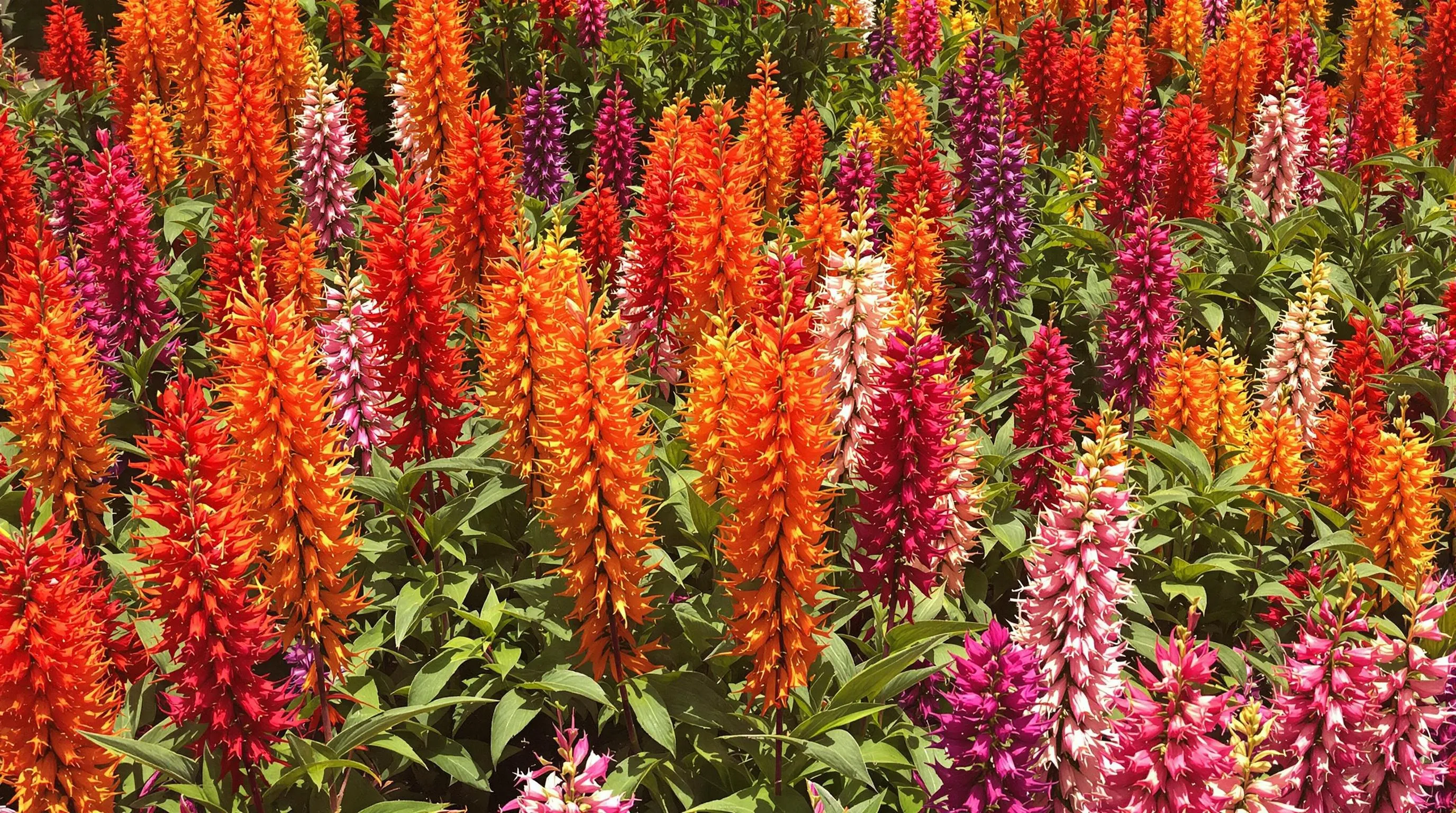
Celosia, with its striking flame-like blooms, is a prolific self-seeder that brings dramatic color to gardens year after year. These heat-loving annuals produce thousands of tiny seeds per plant that readily germinate in warm soil the following spring. Their distinctive plumes or crested flower heads range from fiery reds and oranges to deep purples and pinks, creating a bold statement in borders and containers. Celosia thrives in full sun locations with well-draining soil and rewards gardeners with continuous blooms from midsummer until frost.
Climate Considerations for Reseeding
Celosia’s reseeding success depends heavily on your climate zone. These tropical natives perform best in USDA zones 9-11 where warm soil temperatures encourage natural germination, but they’ll self-seed reliably in zones 6-8 if conditions are right. For successful volunteer seedlings, you’ll need extended periods of soil temperatures above 70°F. In cooler regions, self-seeding occurs later in spring when soil has thoroughly warmed. Areas with mild winters or protected microclimates offer the best chances for natural reseeding. Mulch lightly in colder zones to protect fallen seeds without smothering them. The warmest, sunniest spots in your garden will yield the most volunteer seedlings, so plan accordingly when deciding where to let celosia drop its seeds.
Collecting and Storing Seeds
Harvesting celosia seeds extends your control over next year’s display while ensuring germination success. Wait until flower heads begin to dry and develop a slightly papery texture—typically 2-3 weeks after peak bloom. Snip entire flower heads and place them upside down in paper bags to complete drying, which prevents seed loss. Once fully dry, gently crush the flower heads over a clean surface to release the tiny black seeds. Store collected seeds in paper envelopes or small jars in a cool, dry place for up to three years. Label containers with the variety and collection date for future reference. For the highest germination rates, use fresh seeds within the first year, directly sowing them into warm soil after all danger of frost has passed.
Managing Your Reseeding Annual Garden
By embracing the magic of self-seeding annuals you’ll create a garden that evolves beautifully with each passing season. These natural reseeders save you money while delivering unexpected color combinations and providing vital support for pollinators.
Remember that finding the right balance is key. Allow some flowers to complete their lifecycle and set seed while deadheading others for extended blooming. Don’t apply thick mulch in areas where you want volunteer seedlings to emerge.
With minimal intervention your garden will develop its own personality as cosmos sunflowers and California poppies dance among bachelor’s buttons and love-in-a-mist. Embrace this touch of wildness and you’ll be rewarded with a ever-changing ever-changing display that brings joy year after year.





